Join Our Newsletter for Cozy Home Inspiration, Family Fun, and Delicious Recipes Every Week
12 Easy Seed Sorting Activities for Preschool
One of my recent articles in my blog, Flower Garden Sensory Play Ideas, has taught me one thing over and over: kids don’t need rigid lessons to learn; they need hands-on wonder.
That’s exactly what I was craving when I realized I wanted to introduce seed sorting activities into our early fall learning plan. It all started when I stumbled on a science forum discussing 7th-grade plant growth units, and I thought.
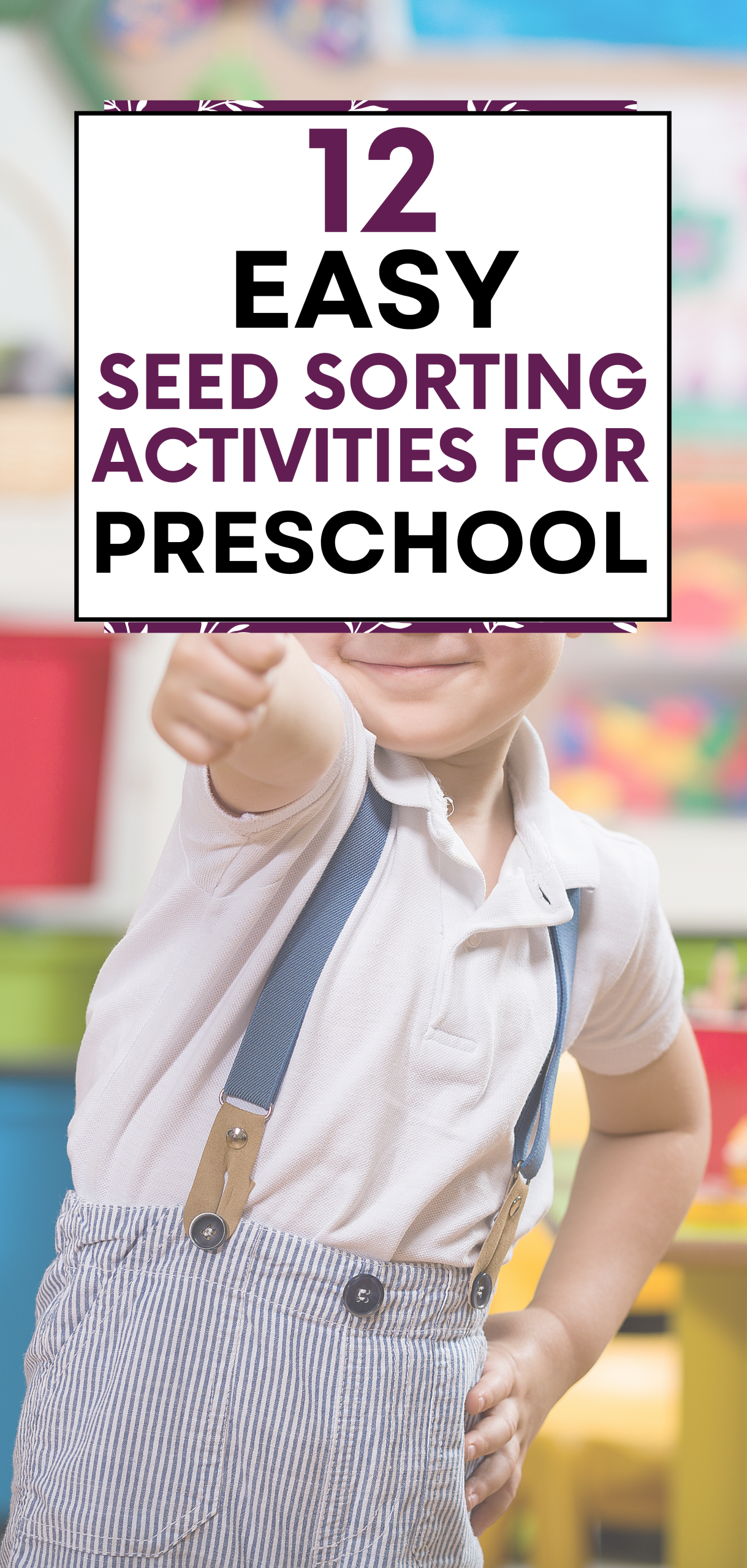
“Why not bring this idea down to preschool level?” But here’s the catch: I didn’t want charts, worksheets, or a list of facts. I wanted curious little fingers in the soil and wide eyes as they sorted seeds like they were uncovering treasure.
The problem was clear: most preschool activities around plants focus on simply “planting a bean” in a cup and watching it grow. That’s sweet, but I wanted more. Something tactile, something that would strengthen fine motor skills and introduce scientific observation.
So I collected a colorful mix of seeds: smooth lima beans, tiny carrot seeds, giant sunflowers, and fuzzy zinnias. I created little mystery seed stations, used muffin tins and sorting trays, and let the children compare, group, and even guess what would grow.
These seed sorting activities naturally led to conversations about size, color, shape, and how different seeds grow into totally different flowers or veggies. No worksheets required, just play, wonder, and a little dirt.
And here’s the beautiful part: these preschoolers didn’t just play, they learned. Sorting seeds opened doors to counting, classifying, and storytelling. One little boy told me the sunflower seed looked like a rocket ship, and I couldn’t have agreed more.
That spark of imagination is what inspired me to add a full section about seed sorting activities to my blog. Because if we can make science feel magical at this age, we’re planting something far more powerful than flowers; we’re growing lifelong learners.
12. Basic Seed Sorting by Size
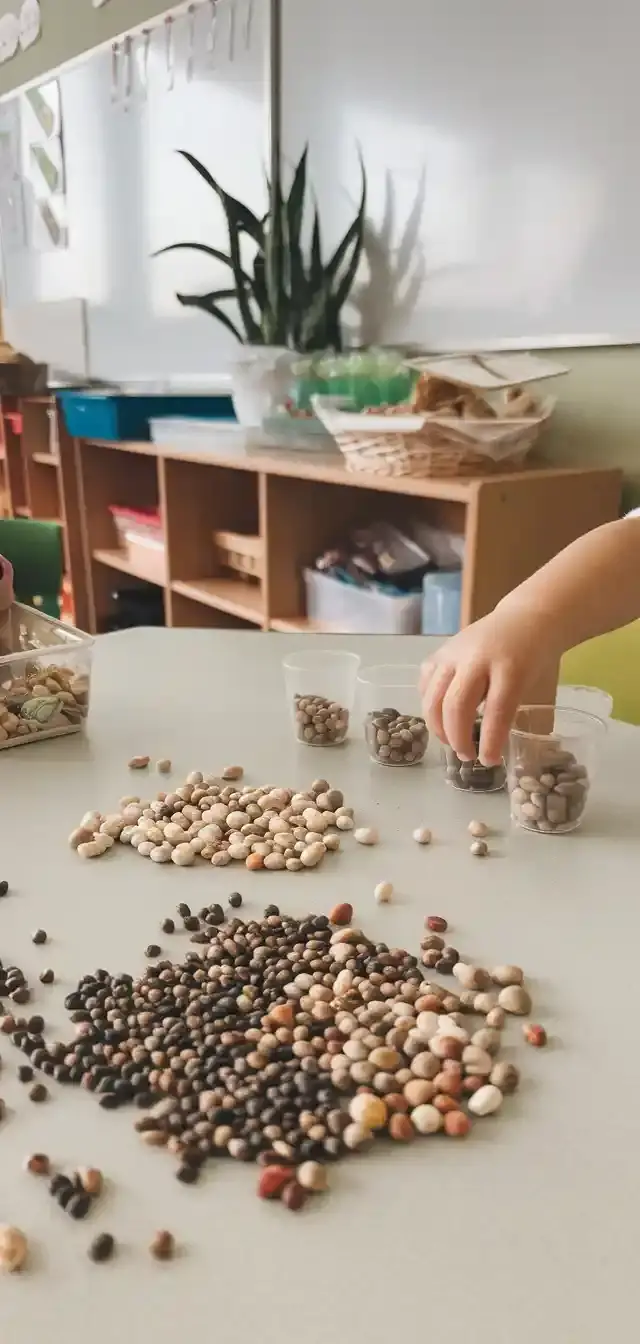
Materials:
- Mixed seeds (pumpkin, sunflower, sesame, chia, etc.)
- Muffin tin or small bowls
- Tweezers or fingers
Steps:
- Present children with a mixed seed tray.
- Ask them to group seeds by size (small, medium, large).
Learning Focus:
- Size discrimination
- Visual sorting
- Vocabulary development
Tips:
- Start with a small number of seeds.
- Use magnifying glasses to enhance detail observation.
11. Color Sorting with Dyed Seeds
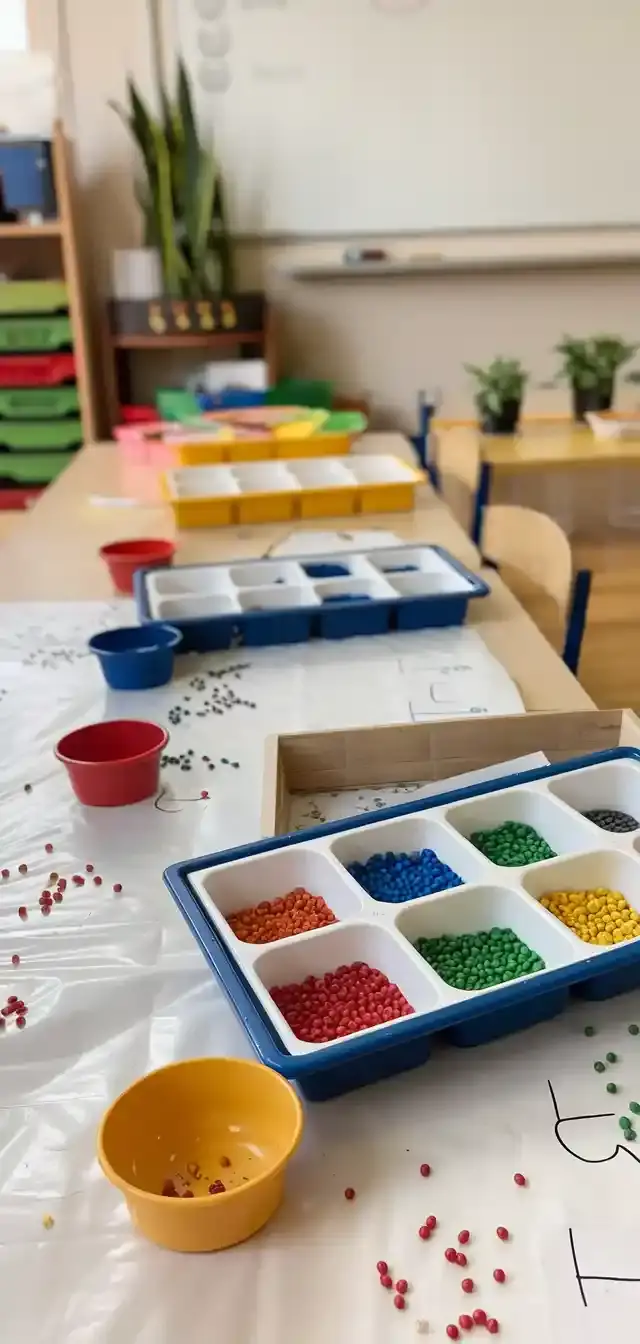
Materials:
- White beans (or lima beans)
- Food coloring
- Ziplock bags
- Paper plates
Steps:
- Dye seeds in different colors using food coloring.
- Dry completely.
- Invite children to sort by color.
Learning Focus:
- Color recognition
- Grouping and classification
Tips:
- Add tongs for extra fine motor work.
- Create a rainbow mat for kids to match seeds to color areas.
10. Seed Sorting with Sensory Bin
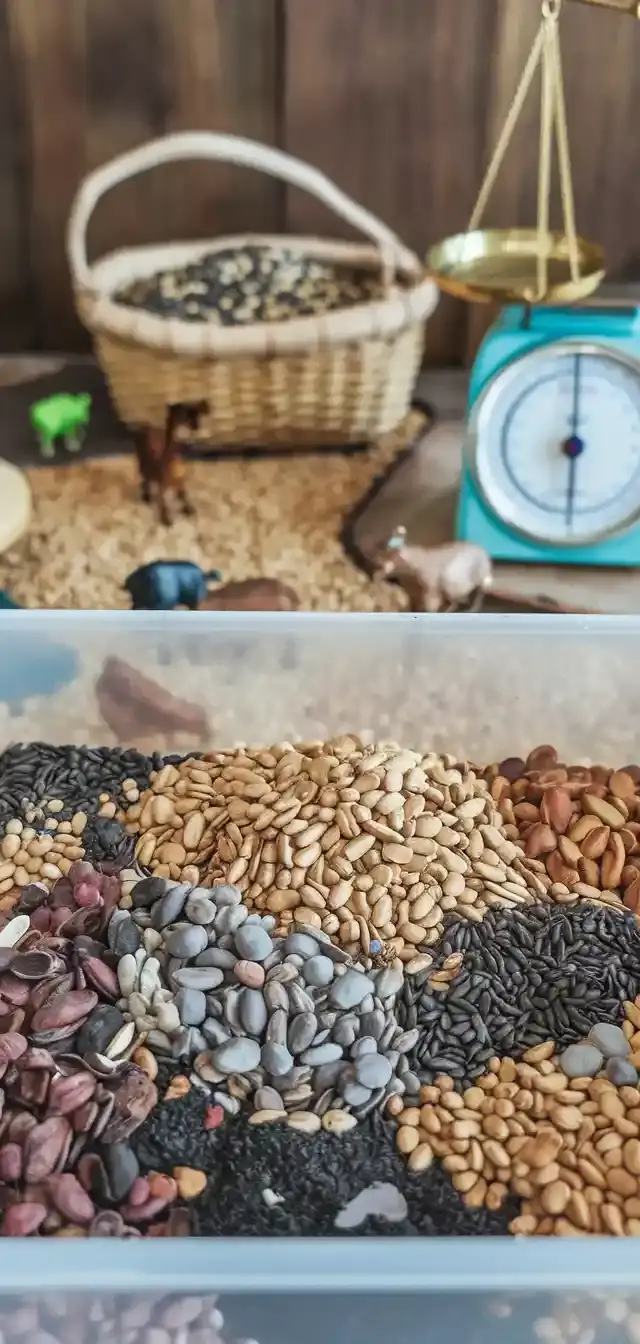
Materials:
- Rice or dry corn as filler
- Mixed seeds hidden within
- Scoops, cups, or sifters
Steps:
- Fill a bin with rice and mix in a variety of seeds.
- Encourage children to dig, find, and sort seeds into containers.
Learning Focus:
- Sensory exploration
- Focus and concentration
- Sorting and categorizing
Tips:
- Include laminated seed ID cards for visual support.
- Add scents (lavender, cinnamon) to make it multi-sensory.
9. Sorting Seeds by Texture
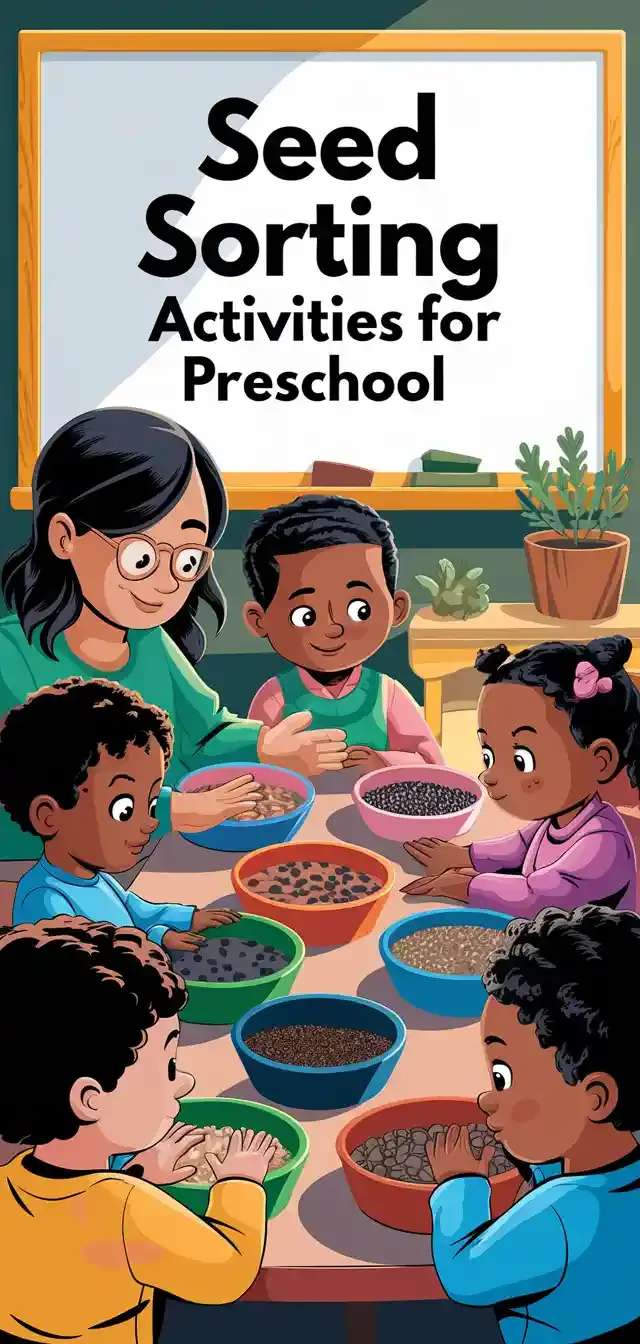
Materials:
- Variety of seeds with distinct textures (smooth, rough, fuzzy)
- Felt mat or textured sorting boards
Steps:
- Encourage students to feel each seed.
- Sort them into soft, rough, or hard groups.
Learning Focus:
- Tactile discrimination
- Descriptive language development
Tips:
- Include blindfolds for a “mystery feel” variation.
- Use real-world texture comparisons (like sandpaper or silk).
8. Seed-to-Plant Matching Game
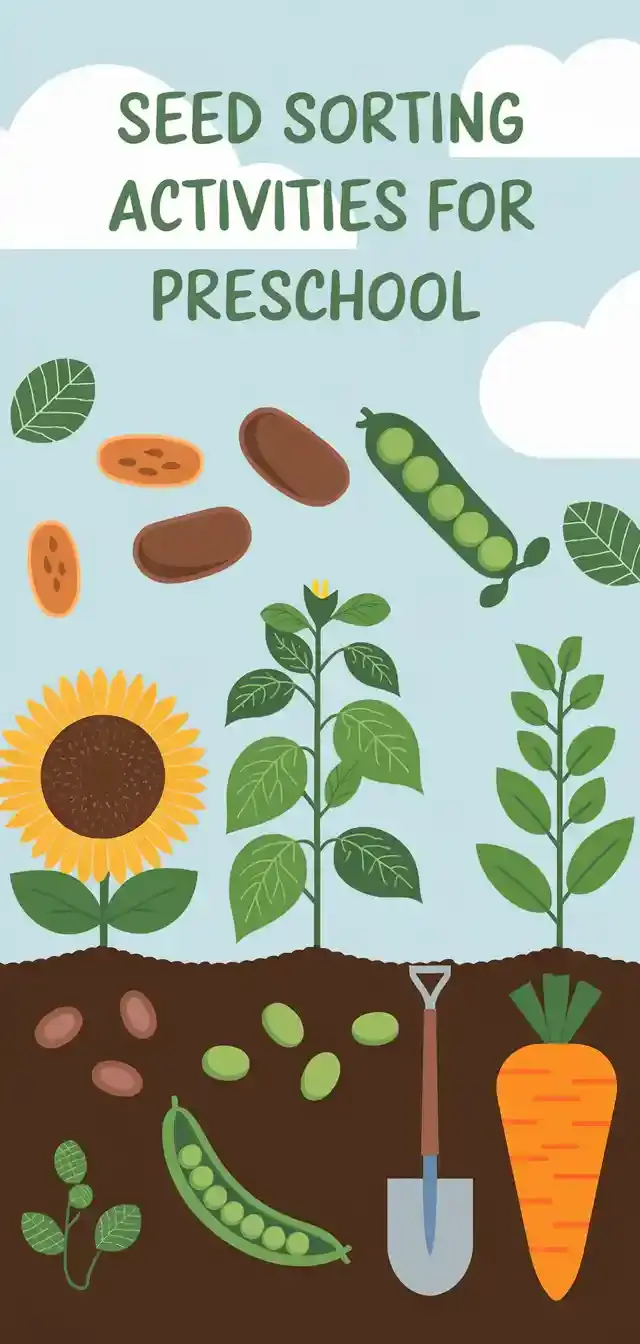
Materials:
- Seed packets or photos of mature plants
- Matching actual seeds
Steps:
- Present images of fruits/vegetables.
- Ask kids to match the correct seed with each plant.
Learning Focus:
- Early botany concepts
- Logical reasoning
- Life cycle awareness
Seed Sorting Activities Tips:
- Use Velcro cards for easy matching.
- Discuss which parts of the plant we eat.
7. Fine Motor Tweezers Sorting Challenge
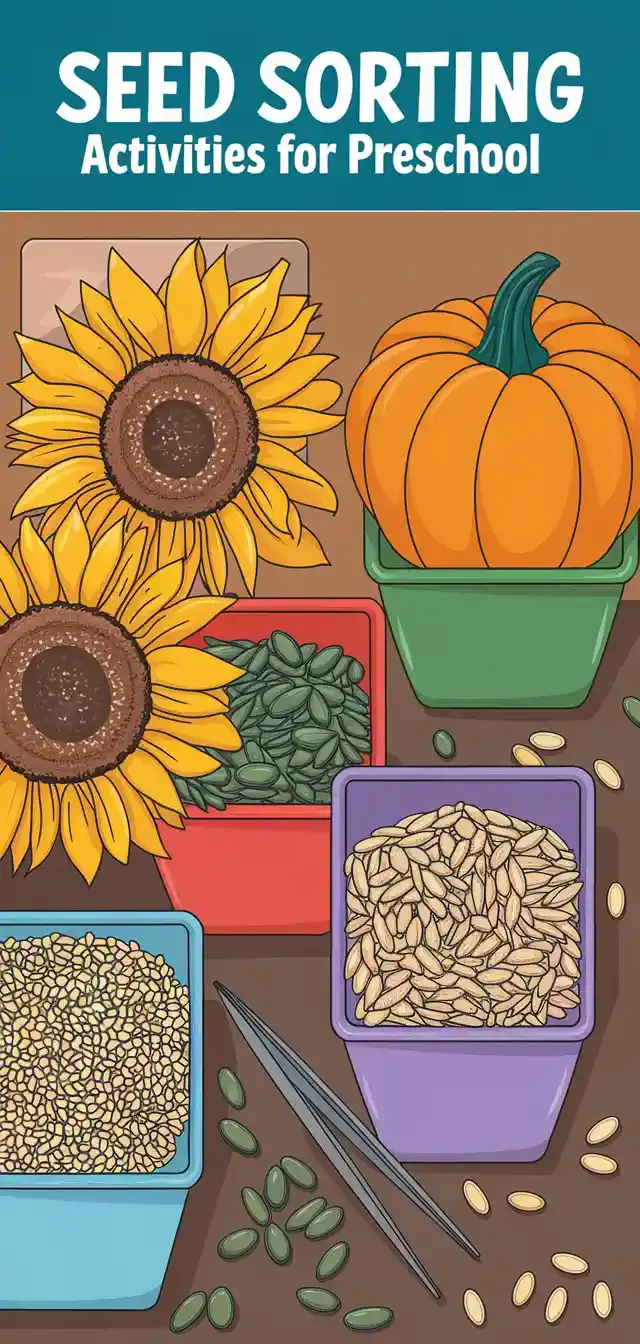
Materials:
- Assortment of seeds
- Ice cube trays or egg cartons
- Plastic tweezers
Steps:
- Use tweezers to pick up and place each seed in the correct section.
Learning Focus:
- Precision and control
- Muscle strength
- Spatial awareness
Seed Sorting Activities Tips:
- Time the challenge for added excitement.
- Use seeds of varying difficulty (round vs. flat).
6. Sorting Seeds into Patterns
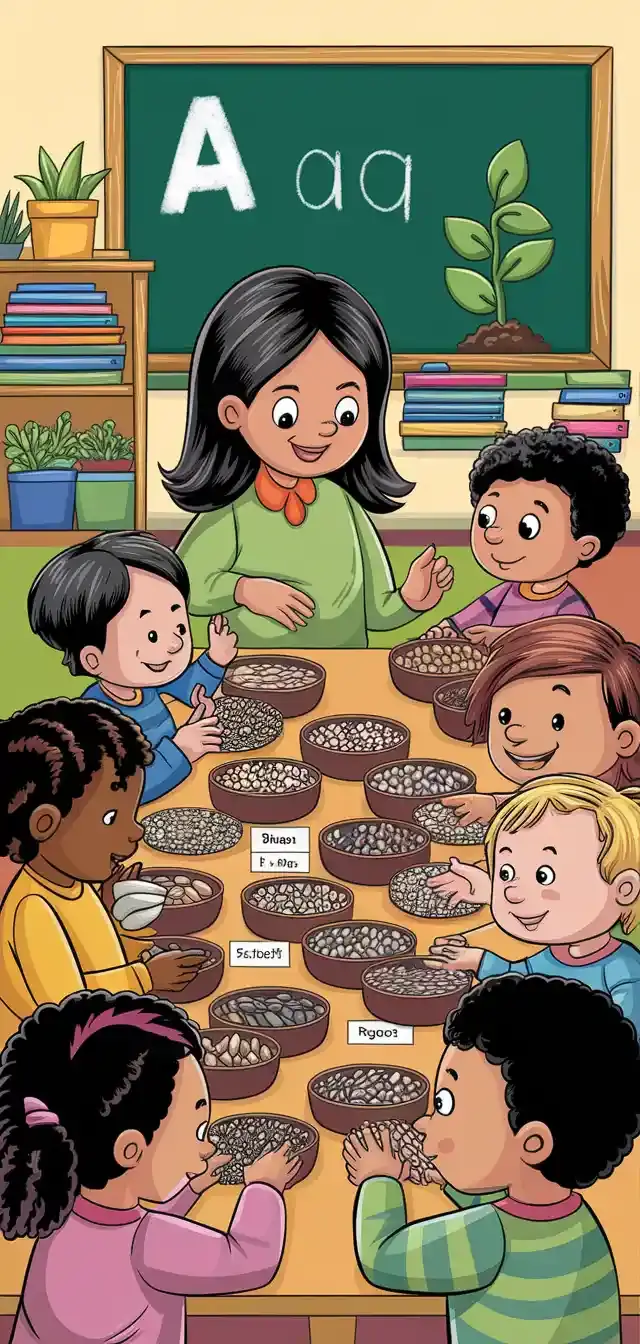
Materials:
- Large tray or felt board
- Lines or grids drawn with markers or tape
- Seeds of various types
Steps:
- Ask students to create repeating or alternating seed patterns.
Learning Focus:
- Pattern recognition
- Math readiness
- Attention to detail
Seed Sorting Activities Tips:
- Create pattern cards to copy (AB, AAB, ABC).
- Use story prompts like “planting rows in a garden” for engagement.
5. Sorting with Magnifying Glasses
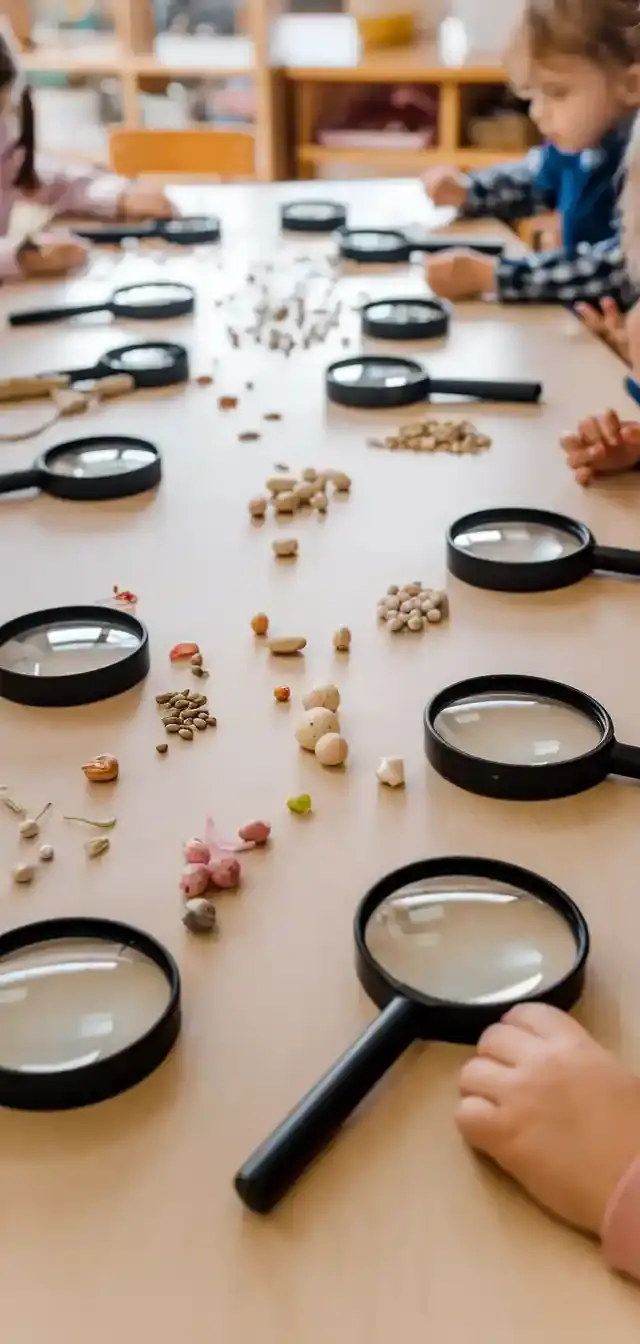
Materials:
- Seeds
- Magnifying glasses
- Sorting trays
Steps:
- Allow students to observe seed details up close before sorting.
Learning Focus:
- Observation and inquiry
- Scientific thinking
Seed Sorting Activities Tips:
- Encourage descriptive words like “striped,” “bumpy,” and “flat.”
- Journal drawings of what they observe.
4. Sound Sorting with Seed Shakers
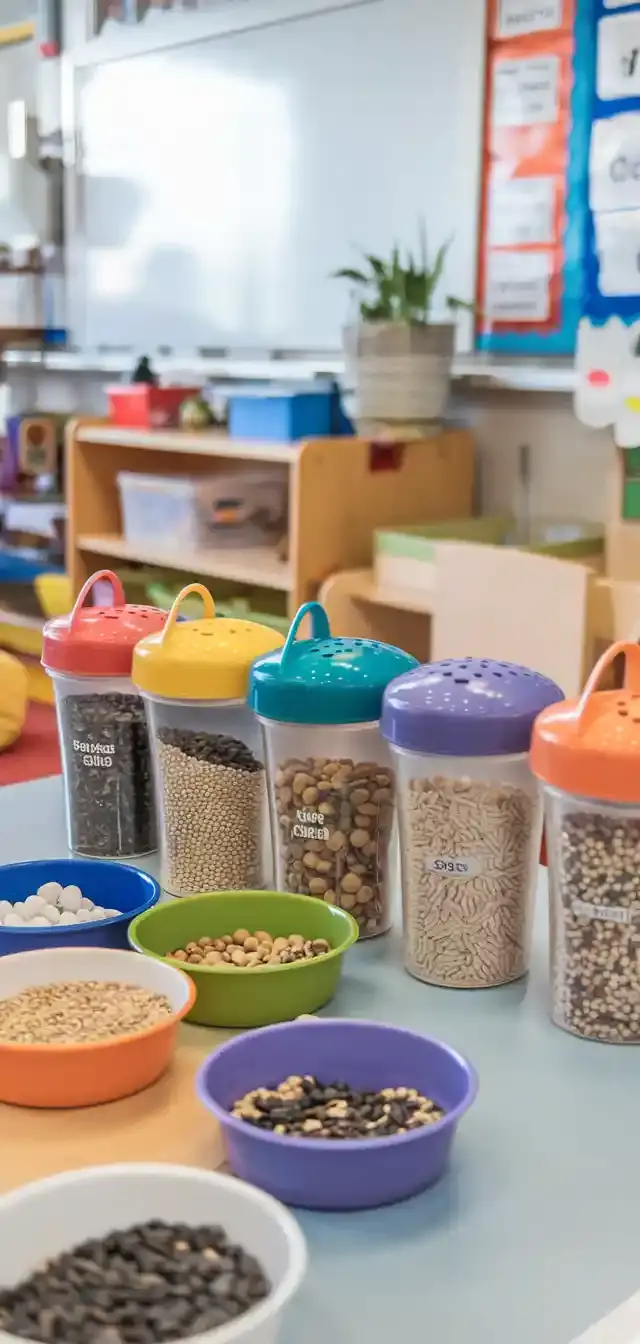
Materials:
- Plastic containers
- Various seeds
- Tape and labels
Steps:
- Make shakers with different seeds inside.
- Let children listen and sort by sound (loud, soft, high-pitched).
Learning Focus:
- Auditory discrimination
- Categorization skills
Seed Sorting Activities Tips:
- Blindfold children for sound-only sorting.
- Pair this with rhythm games.
3. Sorting Seeds into Natural vs. Processed
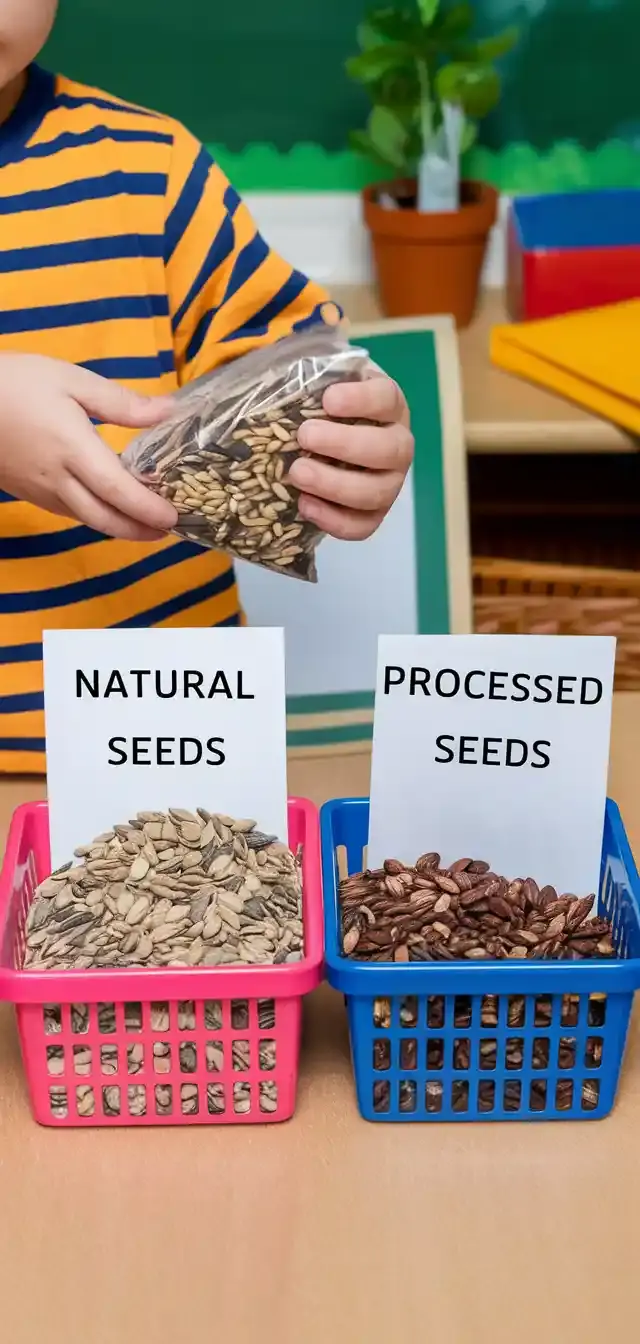
Materials:
- Raw seeds (sunflower, pumpkin)
- Processed items (roasted peanuts, popcorn)
- Sorting mats
Steps:
- Have children decide if each seed is natural or has been processed.
Learning Focus:
- Nature awareness
- Food education
- Critical thinking
Seed Sorting Activities Tips:
- Discuss the process (e.g., roasting or seasoning).
- Introduce the idea of healthy vs. treat foods.
2. Alphabet Seed Sorting
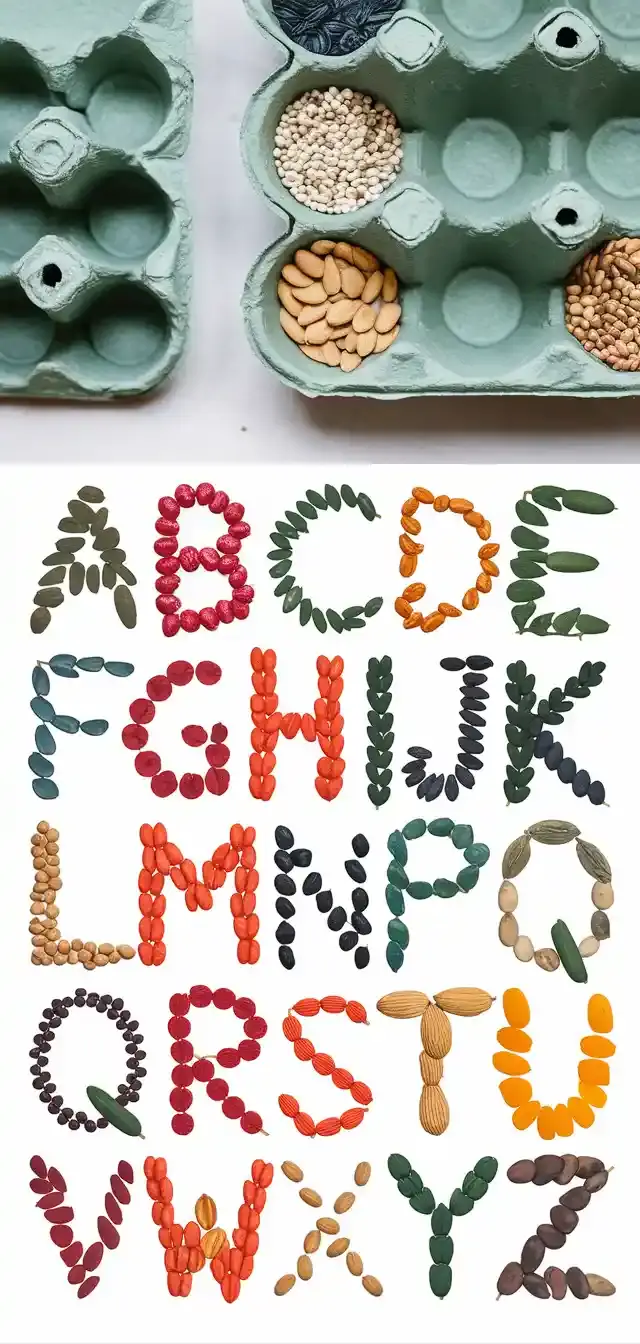
Materials:
- Alphabet cards or mats
- Seeds labeled with lettered bags
- Labels with names (A = Apple seed, B = Bean)
Steps:
- Children match seed to the corresponding letter.
Learning Focus:
- Letter recognition
- Vocabulary building
Seed Sorting Activities Tips:
- Make a seed alphabet chart together.
- Use this activity for phonics practice.
1. Story-Based Seed Sorting Adventure
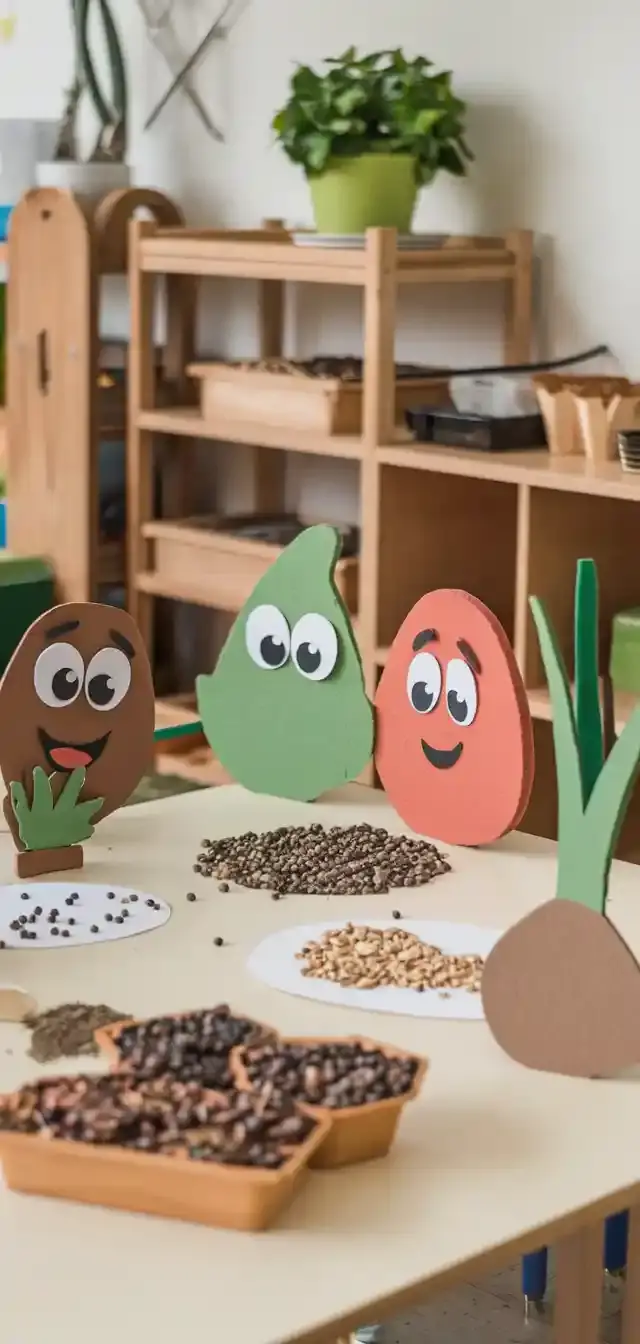
Materials:
- Story cards or picture book with a garden theme
- Seeds representing parts of the story
Steps:
- Read the story.
- As events unfold, children sort seeds according to characters, events, or locations.
Learning Focus:
- Comprehension
- Sequencing
- Memory and listening
Seed Sorting Activities Tips:
- Use “The Tiny Seed” by Eric Carle or similar as inspiration.
- Incorporate felt board storytelling for visuals.
Conclusion
Seed sorting is a powerful, playful way to introduce preschoolers to foundational science, math, and language skills. These 12 activities are rich in sensory learning, engagement, and discovery. With simple materials and creative variations, they can be easily adapted for different learning levels and environments, whether at home or in the classroom.

